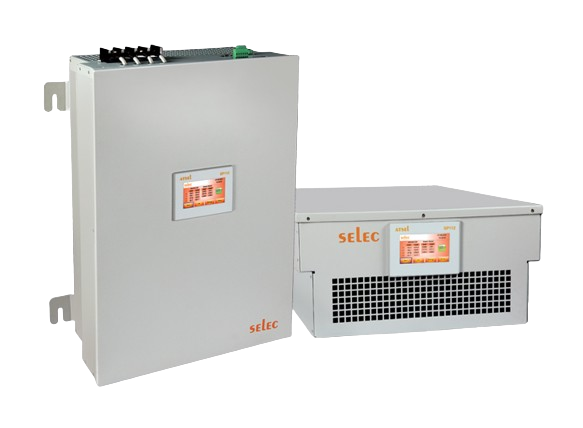Maximizing Power Quality: The Comprehensive Guide to Advanced Static VAR Generators (ASVGs)

In the realm of electrical engineering, ensuring optimal power quality is essential for the efficient operation of industrial, commercial, and residential systems. Advanced Static VAR Generators (ASVGs) have emerged as a key solution for addressing power factor correction, reactive power compensation, and harmonic mitigation challenges. This comprehensive guide, prepared by intelliware.in team explores the principles, applications, installation considerations, and real-world examples of ASVGs, providing valuable insights into their role in optimizing power quality across various sectors.
Section 1: Understanding Advanced Static VAR Generators (ASVGs)
1.1 What are Advanced Static VAR Generators (ASVGs)? Advanced Static VAR Generators (ASVGs) are power electronic devices designed to provide instantaneous and stepless compensation for reactive power fluctuations in electrical systems. By dynamically adjusting voltage levels, ASVGs improve power factor correction and mitigate harmonics, enhancing power quality and system reliability.
1.2 How Do ASVGs Work? ASVGs utilize Insulated Gate Bipolar Transistor (IGBT) technology to regulate voltage levels in real-time. Through sophisticated control algorithms, ASVGs continuously monitor system parameters and adjust reactive power output to maintain optimal power factor and minimize harmonic distortion.
1.3 Key Features of ASVGs
- Instantaneous and stepless compensation for dynamic reactive power fluctuations.
- Mitigation of harmonics up to the 15th order, ensuring clean and stable power supply.
- Capacitive (Leading) and Inductive (Lagging) reactive power mitigation capabilities.
- Modular design for scalable and flexible system configurations.
- High-speed response time (<50 μsec) and full response in less than one cycle.
- Compatibility with communication interfaces such as RS485, Wi-Fi, and Ethernet for remote monitoring and control.
Section 2: Applications of Advanced Static VAR Generators (ASVGs)
2.1 Industrial Applications In industrial settings, ASVGs are deployed to improve power quality, enhance system stability, and reduce energy costs. Examples include:
- Steel manufacturing plants: ASVGs are used to compensate for reactive power generated by large induction motors, improving power factor and reducing electricity bills.
- Chemical processing facilities: ASVGs mitigate harmonics generated by variable frequency drives (VFDs) and rectifiers, ensuring reliable operation of sensitive equipment and minimizing downtime.
- Data centers: ASVGs optimize power distribution and mitigate voltage fluctuations, ensuring continuous operation of critical IT infrastructure and reducing energy consumption.
2.2 Commercial Applications In commercial buildings, ASVGs play a vital role in optimizing power distribution and reducing energy expenses. Examples include:
- Office buildings: ASVGs improve power factor correction and reduce demand charges by compensating for reactive power generated by HVAC systems and elevators.
- Retail stores: ASVGs mitigate harmonics produced by lighting fixtures and electronic displays, enhancing power quality and extending the lifespan of electrical equipment.
- Hospitals: ASVGs ensure stable power supply for sensitive medical equipment, minimizing the risk of voltage fluctuations and electrical disturbances.
2.3 Renewable Energy Integration ASVGs facilitate the integration of renewable energy sources such as solar and wind power into the electrical grid. By mitigating voltage fluctuations and harmonics, ASVGs enhance grid stability and support the seamless integration of fluctuating renewable energy outputs.
Section 3: Installation Considerations for ASVGs
3.1 Site Assessment Before installing ASVGs, a comprehensive site assessment is conducted to evaluate power quality issues, load characteristics, and system requirements. This assessment helps determine the optimal placement and configuration of ASVG units.
3.2 System Design Based on the site assessment, a detailed system design is developed to specify the number, capacity, and configuration of ASVG units required to address power quality challenges effectively. Factors such as voltage levels, load profiles, and system dynamics are taken into account during the design phase.
3.3 Installation and Commissioning ASVG installation involves mounting the units in appropriate locations, connecting them to the electrical system, and configuring control parameters for optimal performance. Once installed, ASVGs undergo commissioning to ensure proper functionality and integration with existing systems.
Section 4: Real-World Examples
4.1 Case Study: Industrial Facility A large steel manufacturing plant implemented ASVGs to address power factor correction and harmonic distortion issues caused by induction motors and arc furnaces. By installing ASVG units at key distribution points, the plant achieved significant reductions in electricity bills and improved system reliability.
4.2 Case Study: Commercial Building A multi-story office complex deployed ASVGs to optimize power distribution and reduce energy expenses. By compensating for reactive power generated by HVAC systems and elevators, ASVGs reduced demand charges and improved power quality, resulting in cost savings and enhanced tenant satisfaction.
4.3 Case Study: Renewable Energy Integration A utility-scale solar farm integrated ASVGs into its grid infrastructure to mitigate voltage fluctuations and harmonics caused by variable solar output. ASVGs stabilized the grid, improved power quality, and enabled seamless integration of solar energy, enhancing overall system efficiency and reliability.
Section 5: ASVG Manufacturer
SELEC Controls is a leading ASVG manufacturer in India. They produce 50KVAR and 100KVAR items with different variants in each segment…
5.1 ASVG 50 kVAr, 3P4W, Rack or Wall mounted
- ASVG-50KVAr- Rack Mount- 3 phase, 4 wire- 4 inch HMI display
- ASVG-50KVAr- Wall Mount- 3 phase, 4 wire- 4 inch HMI display
- ASVG-50KVAr- Wall Mount / Rack Mount- 3 phase, 4 wire- without HMI display
5.2 ASVG 100 kVAr, 3P4W, Rack or Wall mounted
Product Variants
- ASVG-100KVAr- RackMount- 3 phase, 4 wire- 4 inch HMI display
- ASVG-100KVAr- WallMount- 3 phase, 4 wire- 4 inch HMI display
- ASVG-100KVAr- WallMount / RackMount- 3 phase, 4 wire- without HMI display
Conclusion: Advanced Static VAR Generators (ASVGs) are indispensable tools for optimizing power quality, enhancing system stability, and reducing energy costs across various industries and applications. With their advanced features, flexible configurations, and proven performance, ASVGs continue to play a vital role in shaping the future of electrical engineering and sustainable energy management.

